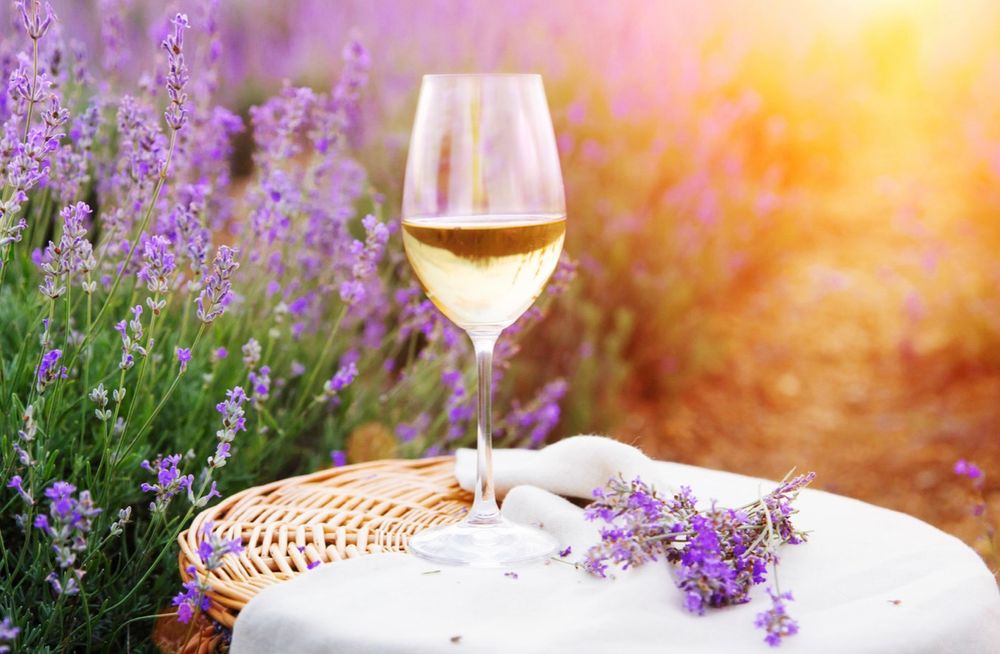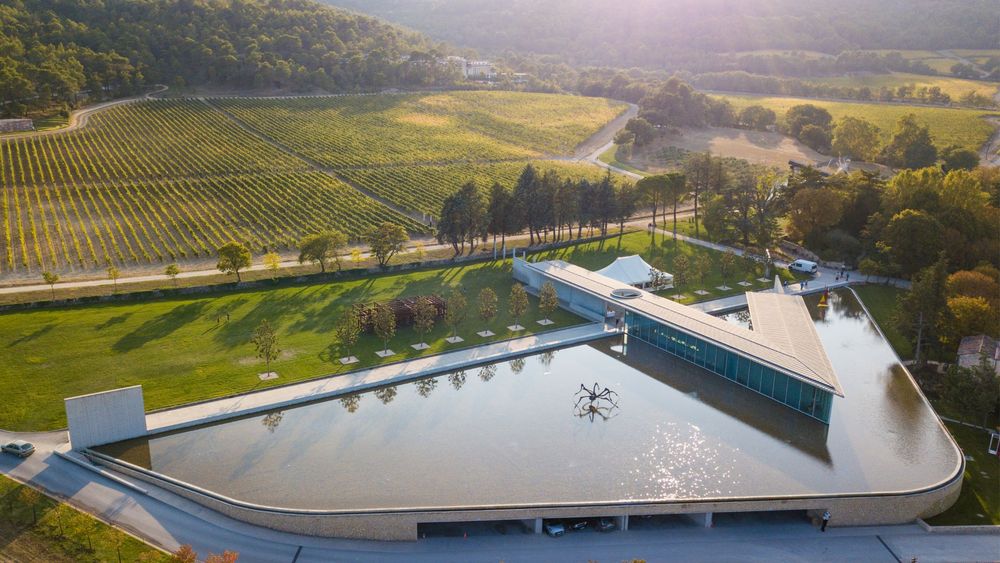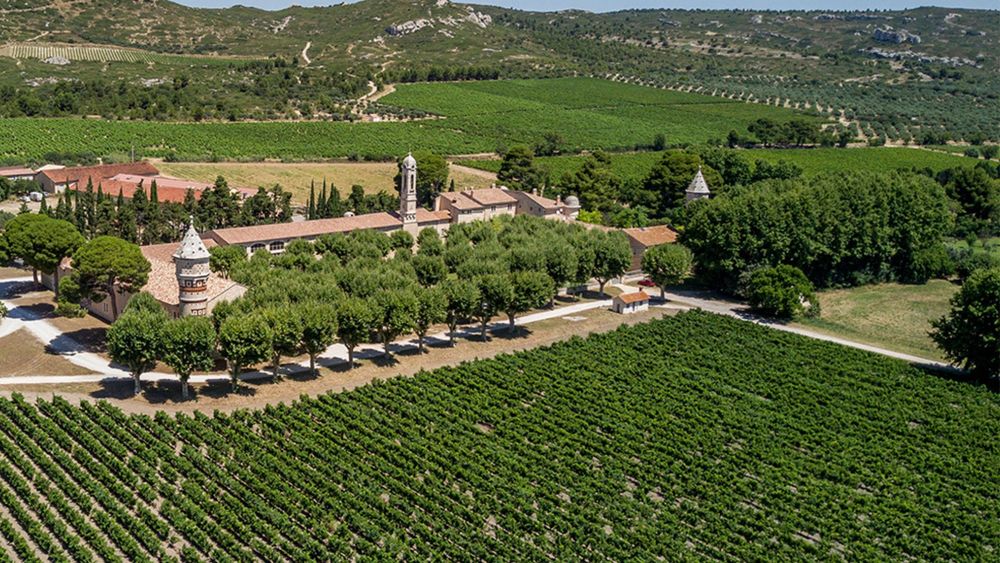Mike Turner assesses why and how Provence has become the go to region for premium, quality rosé and has been so successful it has created a category of its own.
What is it about Provence rosé? We seem to just love it. Ok, not sure about all of you, but I certainly do, and judging by the speed of replies to the village WhatsApp chat when I mentioned I had a couple of opened sample bottles that needed finishing, there are plenty of people out there that share that view.
For this article, I’ve been asked why I think it’s done so well and why it continues to do so well. I’ve drawn on all the chats I’ve had with clients and colleagues (and neighbours clearly) across the retail and hospitality worlds and we’ve all kept coming back to the same themes time and time again. Along with a few of my favourites wines I tasted along the way, here are my top reasons Provence rosé continues to perform so well on the world’s wine market.
Cornering an entire style of wine

The image that sums up Provence rosé -sunshine in a glass…
For many years rosé, let’s be perfectly frank, wasn’t the sexiest product going. When Jimi Hendrix got snapped with that bottle of brand rosé with the candle sticking out of it on his mantelpiece, you could argue that it had hit the commercial big time. But even with those huge levels of sales in the second half of the 20th century, how seriously did the wine industry really take rosé as a style of wine before a couple of decades ago?
This is, of course, a huge generalisation. One of Provence’s closest neighbours, Bandol, has long been famed by those in the know for making some seriously high-end rosé wines, but it remained a relatively niche part of the market. Other regions (not all, but most) made rosé as an afterthought, or even as by product of the red wine process, to get that extra few bucks out of the must. The Provençal made rosé for rosé’s sake and allowed a lower cost entry point to quality rosé. Ok, that price range has crept up over the years, but it’s many people’s first port of call in the world of dry, fresh rosé and something that sticks with them as a mark of quality.
Using the colour as a brand
Anyone who has ever sold wine in the past couple of decades will know how the conversation goes. Trying to sell the average wine buyer a rosé that doesn’t look like an identi-kit Provençal rosé is tough going. Of the entire spectrum of pink on the colour chart, that pale, salmon-pink colour clearly gives a level of comfort that any brand in the world would envy.
The history of darker coloured rosé is chequered to say the least. Iconic mega-brands like Mateus and Lancers were then followed by the uber successful blush rosés that have sold by the millions of cases. Whatever you think about these wines, or whether you’d go out and buy a bottle yourself, you can’t deny that many wine drinkers will have started their rosé drinking lives with something dark, sweet, and confected.
As you get older you don’t want to drink those wines anymore, so when you’re in front of the wine shelves, what do you have to go on? If it’s dark it’s probably sweet, right? Now you and I know that’s not true, but how many punters walking into supermarkets or bars know that? Provençal rosé is the perfect fit as dry, crisp, fruity and fresh wines that are crucially light in colour. Serious rosé makers from elsewhere in the world have nearly all had to gradually lighten the colour of their rosé in order to compete.
Banker for restaurant lists

Hands up if you can find a bar, pub or restaurant that does not have a Provence rosé (or a very pale pink rosé) on its list…
Rosé is now a nudge over 11% of the still wine market globally. You can’t really get away with building out a half decent wine list without a rosé section, and as much as you’d love to add something cool from Spain or Australia, you know that Provence rosé is the one everyone’s heard of, and it’ll sell.
It’s also far more useful as a food pairing than most people give it credit for. Seafood…check. Shellfish…check. Salads…check. Charcuterie…check. Ok, we all know those ones, but what about this time of year? One of my favourite pairings I’ve pinched from the wonderful Fiona Beckett (https://www.matchingfoodandwine.com should be on everyone’s bookmarks) is rosé with your turkey and cranberry sandwiches on Boxing Day.
Provence rosé is also a great all-rounder for vegetarian meals, pretty much anything with fruit in it, and it removes all the “should you have red or white with this?” debate when you pull out the cheese board.
Selling that lifestyle
As much as I’ve just extolled the virtues of drinking Provence rosé all year round, you can’t escape the glorious idea of life in the sun and surroundings of beautiful Provence that has a clear appeal. Peter Mayle’s “A Year in Provence” had an entire generation whistfully dreaming of sipping dry, crisp rosé on the sun-drenched terrace in the late afternoon. And why not? If you’re going to day dream about anything…especially when you’re actually on the a terrace in Blackpool.
Top estates from Provence have rightly played on this, especially those with celebrity appeal. If we drink this wine then we can have our own part of that luxury lifestyle we all want. With the arrival of luxury goods conglomerates, such as LVMH taking a majority stake in Château d’Esclans or Chanel’s acquisition of Domaine de L’Ile, the standard of wines, wine tourism and selling the lifestyle will clearly continue well into the future.
My Top Picks from Across Provence

Mike Turner’s pick of Provence rosés
I’ve picked out a few wines from across the AOCs in Provence for you to keep your eye out for. Looking for something to have with the leftover turkey this winter? Have a try of these:
Château La Coste 2021, Côteaux D’Aix-en-Provence AOC
Wanderlust Wine, RRP £21.00
Although wine is the primary business operation at Château La Coste, the team offers a sumptuous array of luxury wine tourism activities such as four different restaurants, a luxury hotel and wellness spa, and even acts a base for an array of architectural and artistic talent from across the globe. It’s actually the setting of one of Bob Dylan’s (yes that Bob Dylan) finest sculptures – check it out online.

Château La Coste offers great tourism as well as top class Provence rosé
The grapes come from vineyards that were certified organic back in 2009 and are now farmed following biodynamic practices. The wine is a blend of predominantly Grenache, with Syrah and Cabernet Sauvignon making up the rest of the blend. It’s a subtle builder in the glass, with layers of strawberries, redcurrants, ripe peach, and red cherries. I really liked the warmth on the palate from the white pepper and stone minerality, with those lovely red and white fruits leaving a long and luxury finish.
Château Calissanne, Calisson de Calissanne 2021, Côteaux D’Aix-en-Provence
Vinatis, RRP £17.00
Château Calissanne is a 1,000-year-old property set in a 1,200 hectare estate in, what many claim, is one of the most beautiful corners of Provence. I’ve personally never visited, but a quick look on their website would suggest they’re not too far wrong. Within that estate sits 110 hectares of HVE Level 3 certified AOC Coteaux d’Aix-en-Provence vines and a further 60 hectares of AOC Aix-en-Provence olive trees thrive in chalky soils, facing the mountains that protect the fields form the strong Mistral.

The 1,000 year old Chateau Calissanne
The Calisson de Calissanne is 80% Syrah and 20% Vermentino, making it the only non-Grenache blend in this small line-up. This was the most perfumed of the wines I tried in the mini line up which nudged it into my top 3. Lots of blood orange citrus, as well as orange and peach blossom on the nose to match the ripe red fruit notes. On the palate, that citrus note is ever present throughout a long fruit driven finish, with some lovely garrigue complexity on the aftertaste.
Château Real Martin, Perle De Rose 2021, Côtes De Provence
Vinatis, RRP £15.00
One of those idyllic Provence, with vineyards placed amongst rows of olive trees, this organic property used to be the home of the Counts of Provence before being purchased by the Paul family in 2001. The grapes are grown on rocky, clay-limestone soils at just shy of 400m, offering sun exposure but also tempering from the warm summer sun.

The sun drenched Chateau Real Martin
Its Perle de Rose label is its entry label, made from a blend of Grenache, Cinsault, Syrah, and Rolle. What I loved about this was the more savoury note to the taste of the wine following what is a fresh fruity and floral nose. On the palate there’s an almost saline note in there that keeps it light throughout the palate of strawberries, red plums, and a blood orange citrus note throughout.
- You can find out more about the region at Vins de Provence website.
- Mike Turner is a freelance writer, presenter, and educator and regular contributor for The Buyer. He also runs a wine events business, Feel Good Grapes, that explores and discusses the idea of sustainability in the wine trade.
































